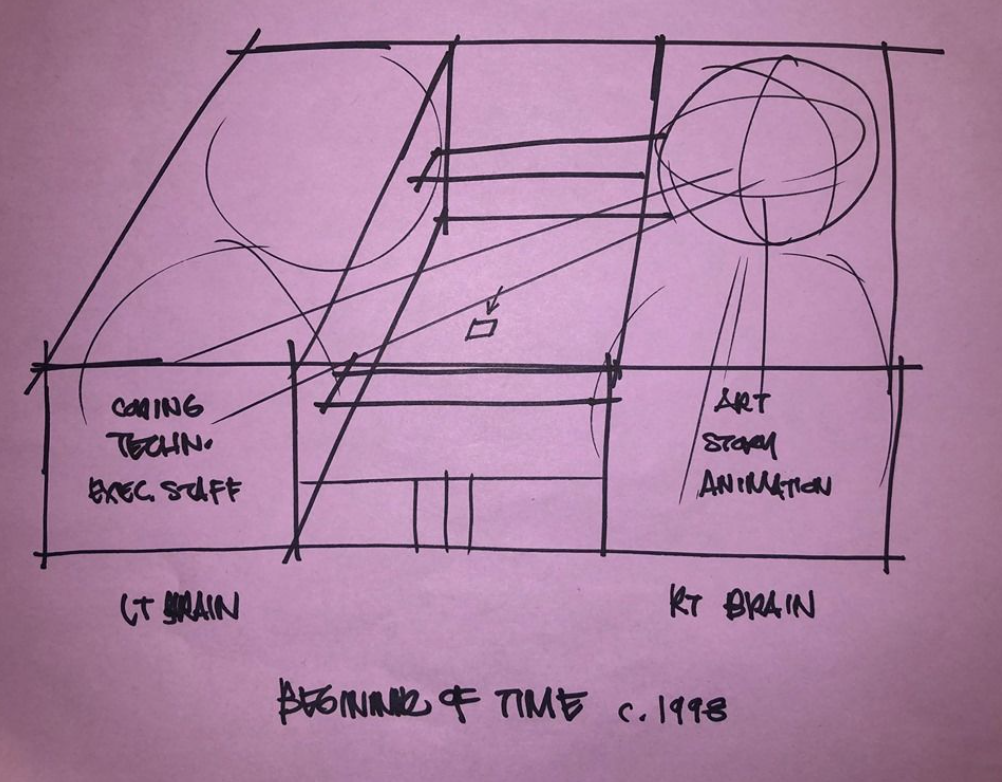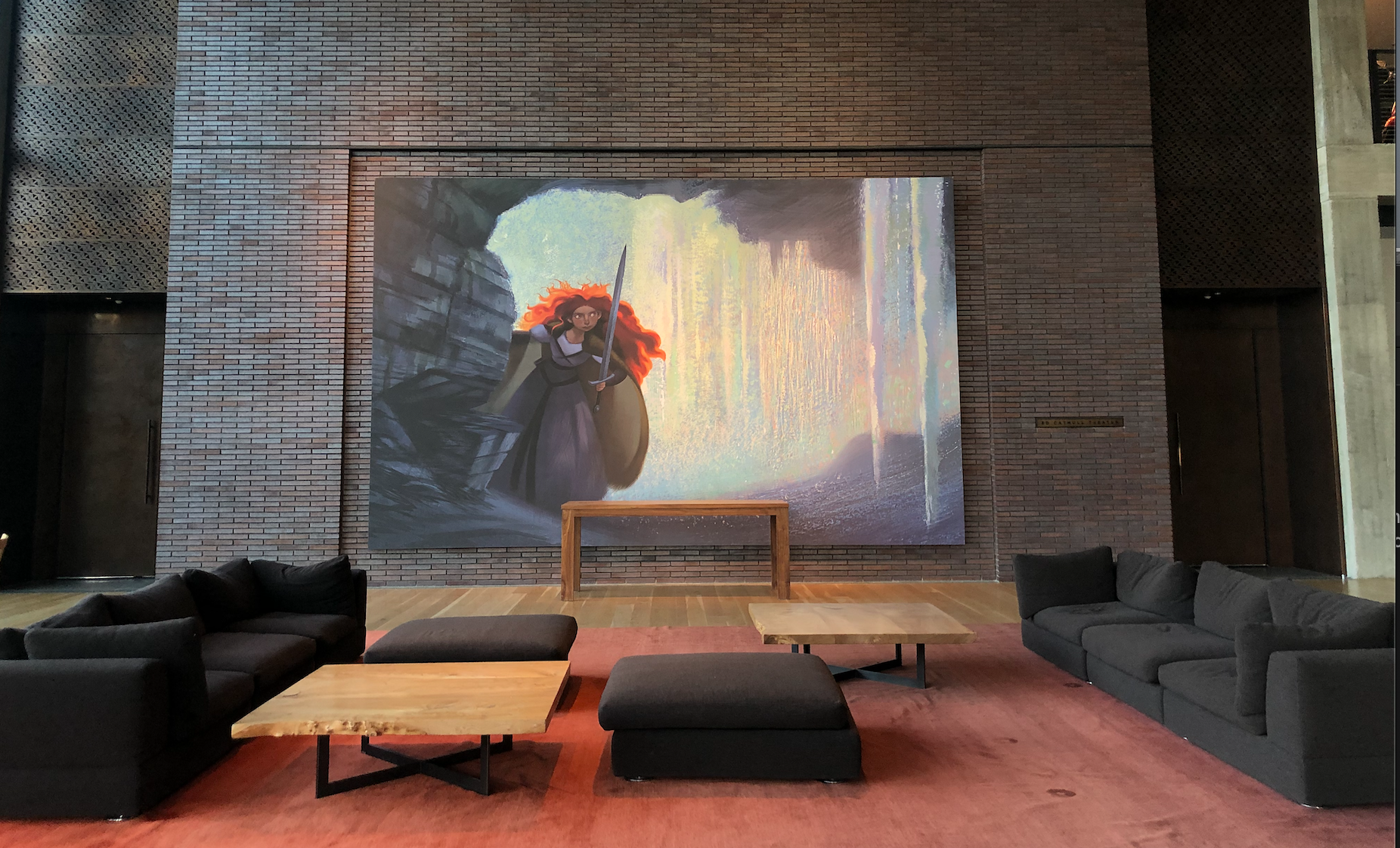THE NETWORK ANALYSIS AND LEADERSHIP STRUCTURE OF PIXAR

“How do you define failure?”- I asked Jay.
“You know, there’s always failure in what we do here. Our motto is, “failing forward.”
(Jay Shuster,2020)
As an art director, Jay Shuster communicates with every member of his team personally, giving feedback directly, making each employer feel comfortable. He helps them grow into leaders by empowering them and by aligning the objectives and goals of the individual followers, the leader, the group and the larger organization. Jay featured how John Lasseter would always overlook his work over his shoulder to see if he’s on track and give guidance if needed. Steve Jobs would check each design concept before being released, and Edward Catmull would always be in the office with the tech employees.

The main building of Pixar Animation Studios, designed by Steve Jobs, represents the human brain. The right side of the human brain performs tasks that have to do with creativity and the arts, that’s why animators and story writers were placed on the left side of the building. The left side of the human brain performs tasks that have to do with logic, such as in science and mathematics, so coders and technicians were placed on the left side of the building. Two bridges are built to connect these two parts, and the cafeteria in the middle so different talents could work together and share ideas during free time.
Pixar’s “Braintrust” is a group where directors come together, every few months, to review a film’s progress, while giving their peers feedback about what they liked and what needed to be improved. Jay highlights how when he worked at Lucasfilm his sketches had to be perfect before being presented to the director. This was because of the hierarchical structure, the director was the only one with the total authority to choose between ideas, so people presented only flawless ones. At Pixar, when presenting in front of the “Brain trust”, people can get ideas in the middle of the meeting, have a rough sketch on the back of a dirty document, and it can be accepted . Jay loved this difference at Pixar because he felt like he had the freedom to experiment. This is an outcome of Braintrust being a group of 6 people, where no single person had authority, and everyone felt as if they were helping one another to make great films. The brain trust gives feedback, but the director is free to act on it or not . Catmull, former president of Pixar and Walt Disney Animation Studios, describes the sessions as being characterized by “frank talk, spirited debate, laughter, and love”(Stallard, 2014). Since Disney got involved, the brain trust became more authoritative, choosing over ideas based on the tight budget. At Pixar, they believe that providing the freedom to take decisions helps in the development of teams, where no single individual is considered as a decision making authority. Disney, however, has a different approach to leadership, which was an obstacle when the two companies emerged after Disney bought Pixar.

At Disney, the executives manage teams by having control over the budget and making the final decisions, resulting in a closed relationship between the employees. Employees at Pixar have a strong learning approach toward their job, which people at Disney lacked. The differences in values and leadership styles of the two companies resulted in several cultural issues. Pixar works more with 3D animation, while Disney prioritized 2D animation. Brave was given to Pixar to work on, but employees knew it was a more Disney-ish like movie. Different designs on the narrative of the two studios were conflicted, such holding Brave for reaching its full potential. As a solution, a formal team of leaders was created. The Vice President of Pixar, Edwin Catmull, was appointed as the chief creative officer of Disney’s and Pixar’s animation studios. He had the authority to “green light” films for both the studios. Disney’s CEO has the last saying in approving the movie. For the Pixar-Disney emerge, the Matrix strategy could be used as a solution. Leaders should allow open integration between team members, offering informal training to the employees of Disney so they can adjust to the open culture of Pixar. This will ensure a smooth flow of knowledge and information helping people from both the organizations understand each others’ values and working styles. Disney and Pixar studios are kept separate. One Studio can be used, where a combined set of values could be fostered to ensure a successful emerging
